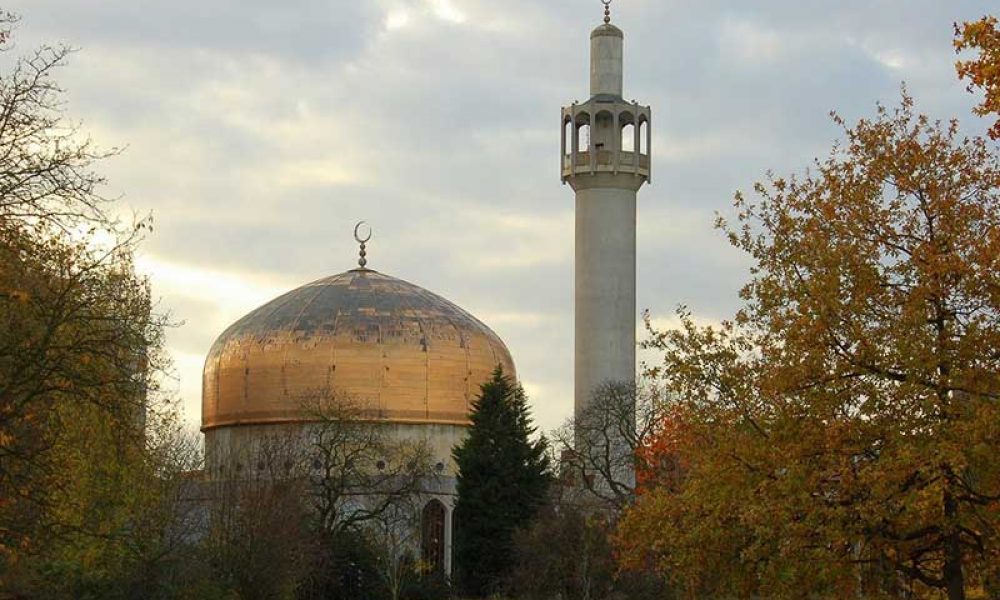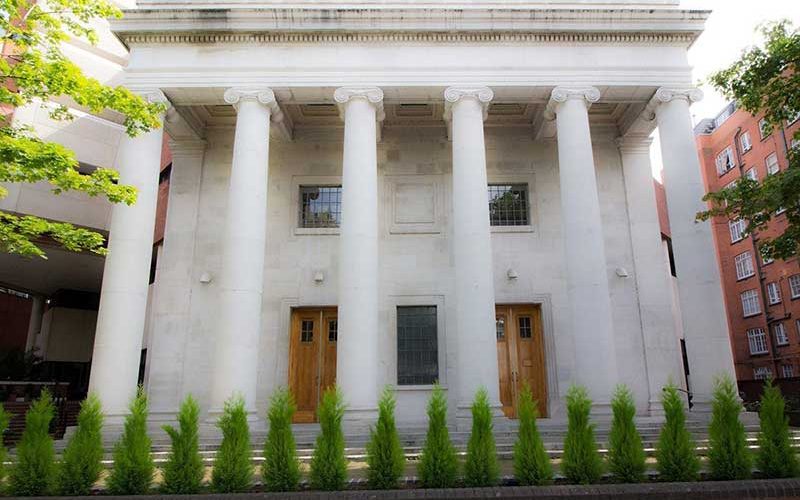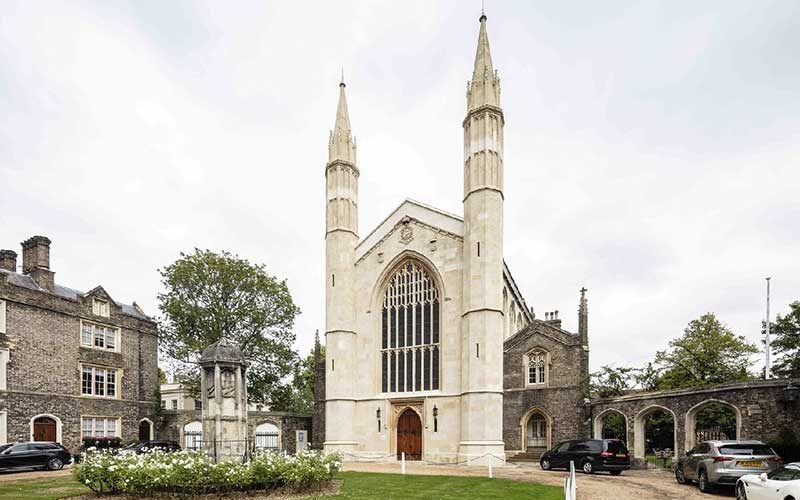The London Central Mosque is a mosque located near Regent’s Park in London, United Kingdom. It was designed by Sir Frederick Gibberd, completed in 1977, and has a prominent golden dome. The main hall can accommodate over 5,000 worshippers, with women praying on a balcony overlooking the hall. The mosque holds a chandelier and a vast carpet.
Between 1900-1930 several efforts were made to build a mosque in Central London, including one initiated by Lord Headley. Headley was born in London in 1855 and educated at Westminster School and Trinity College, Cambridge. He then entered Middle Temple, before commencing studies at King’s College London. Headley embraced Islam in 1913 and adopted the Muslim name of Shaikh Rahmatullah al-Farooq.
It was in 1940 that the British Government was persuaded to present a site in London to the Muslim Community of Great Britain. The Churchill war cabinet authorised the acquisition of a site to build a mosque in London on 24 October 1940.
A prime site adjacent to Hanover Gate in Regents Park almost 2.3 acres in size was presented by the British Government as an unconditional gift to the Muslim Community in Britain so they may conduct affairs pertaining to the Islamic Faith. The Al-Azhar University in Cairo, Egypt, delegated an imam for the newly built mosque in Central London and continued to do so for many decades.
It was not, however, until 1974 that construction of a purpose-built mosque began. The present building is based on a design by Sir Frederick Gibberd, selected in 1973 from many others in an international competition. The mosque took over two years to complete at the cost of £6 million, with a generous donation from H.M King Faisal of Saudi Arabia. It was later completed by His Highness Sheikh Zayed of the United Arab Emirates. Until today many countries participated in this unique mosque. In the 1990’s the London Central Mosque Trust and Islamic Cultural Centre received a generous donation from His Majesty King Fahad of Saudi Arabia for the extension of the administration wing. His Majesty Sultan Qaboos of the Sultanate of Oman granted a generous donation for the establishment of the restaurant and dining facilities. More recently His Highness Sheikh Tamim bin Hamad Al Thani the Emir of Qatar has made significant contributions to the extension and renovation of the Centre. The State of Kuwait have also invested heavily in support of the Centre. With the Board of Trustees of the Centre comprising the Muslim Ambassadors and High Commissioners in London, the Centre receives invaluable support and sustenance from across Muslim nations in allowing it to serve the wider community.
Within the Centre there is an education unit which includes a weekend school with over 350 students. The purpose of the weekend school is to teach Arabic Language and Islamic Studies to students of many backgrounds and nationalities. The Centre also holds an interfaith department which collaborates with more than 30 organisations with regular dialogues and interfaith scriptural reasoning events to promote peace, interconnectedness and coexistence in society.
The Centre has an academic quarterly journal called the IQ – Islamic Quarterly which is published every 3 months containing numerous articles about the Islamic Civilisation.
Moreover, the Centre holds a religious affairs unit with qualified Imams to issue fatwa (Islamic Advice), hold question and answer sessions, conduct marriages, divorces and conversion certificates and hold regular Islamic classes through the collaboration with the Registrar’s unit.
The new Muslim programme initiative has been set up by the Islamic Cultural Centre & London Central Mosque to provide a spiritual, educational, religious and social support network for those who are interested to learn more about Islam, for those who have recently converted to Islam and for those born Muslim and who would like to learn more about their religion. There are currently some 4,000 new Muslims from the Centre who take part in this initiative.
The Islamic Cultural Centre is pleased to have one of the largest and oldest Islamic reference libraries. The Library has a rich selection of historic books and journals in English and Arabic. It holds copies of the Translations of the Qur’an in European/Arabic/Indic languages. There are more than 25,000 books in our library and copies of the Qur’an in 30 Languages.
The Centre has many initiatives for Youth which include the Hikmah Youth Programme – a weekly Forum where students can take up many academic and interactive activities. Moreover, the Centre has an Arabic Cultural Saloon which fosters monthly intellectual lectures in Arabic for youth wanting to learn more about their cultures with topics ranging from history, literature, philosophy and Islamic heritage.
An Islamic exhibition, the first of its kind to be built in the United Kingdom, occupies over 60 meters of wall space and provides visitors with a visual journey through the Islamic faith. The exhibition spans two of the basement halls and incorporates video screens, models and posters to provide a multidimensional viewing experience for visitors. The exhibition aims to provide a greater understanding of the universal message of Islam, thereby encouraging meaningful and positive dialogue and promoting greater community understanding and harmony.











